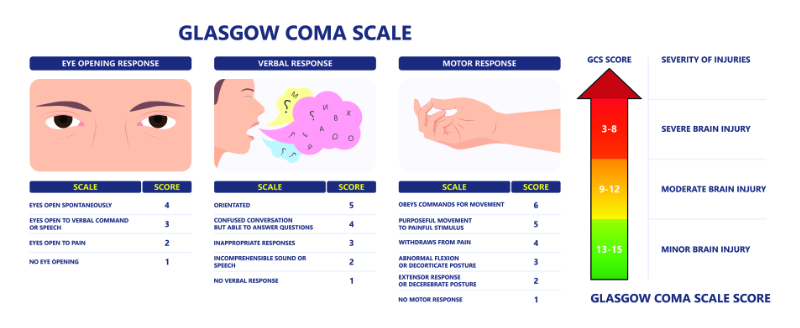Athletic trainers are often the first responders to medical emergencies on the field or court. Their quick thinking, assessment skills, and ability to remain calm under pressure are crucial in providing immediate care to athletes. This case study illustrates an athletic trainer's assessment and management of a medical emergency trauma.
John is a certified athletic trainer who works with a high school football team during a crucial playoff game. Suddenly, he notices one of the star players, Michael, collapse on the field after a hard tackle. John rushes to Michael's side along with the team physician.
Upon assessment, John finds Michael unconscious with shallow breathing and a weak pulse. He quickly stabilizes Michael's head and neck to prevent further injury and instructs bystanders to call emergency services. John begins primary assessment procedures, checking Michael's airway, breathing, and circulation (ABCs).
John observes that Michael has a visible head injury and a possible neck injury due to the impact of the tackle. Suspecting a traumatic brain injury or spinal injury, John refrains from moving Michael by stabilizing his head and neck in neutral and continues to monitor his vital signs closely.
Meanwhile, John communicates with the coaching staff, instructing them to clear the field and keep other players away to prevent further accidents. He also directs other medical team members to gather necessary equipment, such as a spine board and cervical collar, for potential transport. Upon their return, the medical team members quickly remove Michael’s facemask with a powered, non-corded screwdriver, allowing full access to the airway should it become compromised.
As John continues to assess Michael's condition, he maintains constant communication with emergency responders, providing them with crucial information about Michael's injuries and vital signs. John ensures the scene remains controlled and organized to facilitate a smooth transition once the emergency medical team arrives.
Once emergency medical services arrive, John provides a detailed report of the incident and Michael's condition. Together with the EMS team, they carefully immobilize Michael using a spine board and cervical collar before transporting him to the nearest trauma center for further evaluation and treatment.
John remains calm and focused throughout the ordeal, reassuring Michael's teammates and coaches. He also updates Michael's family on his condition and coordinates with the medical team at the hospital to ensure continuity of care.
In the following days, John continues to support Michael and his family, offering guidance and resources for rehabilitation and recovery. He collaborates with healthcare professionals to develop a comprehensive treatment plan tailored to Michael's needs, emphasizing the importance of patience and gradual progression in returning to physical activity.
Over time, with proper medical care and rehabilitation, Michael makes a remarkable recovery and eventually returns to the football field. John's quick actions and effective trauma management highlight athletic trainers' critical role in ensuring athletes' safety and well-being during high-stakes situations.
This case study underscores the importance of preparedness and quick response in managing medical trauma in athletes.












-800px.jpg)




